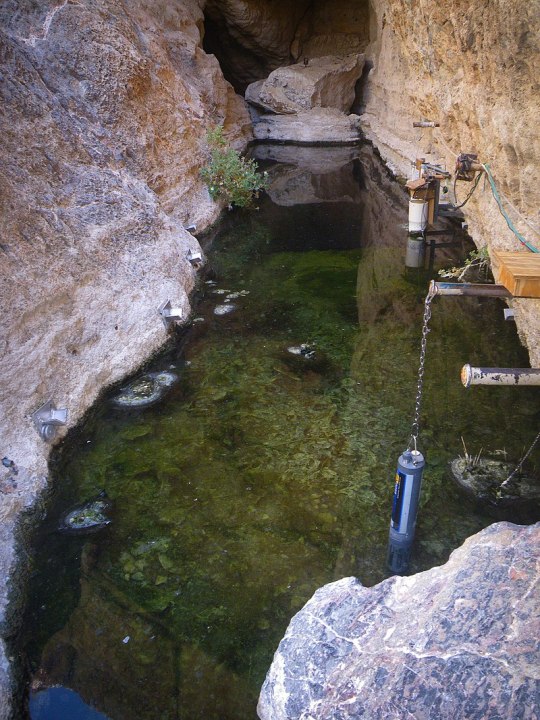#amargosa
Explore tagged Tumblr posts
Text

amargosa valley. via flickr
2 notes
·
View notes
Text
American Auto Trail-Death Valley National Park (Part 1) (Death Valley Jct to Furnace Creek Ranch CA)
American Auto Trail-Death Valley National Park (Part 1) (Death Valley Jct to Furnace Creek Ranch CA) https://youtu.be/O1No9NxMA3A Part 1 explores from Death Valley Junction, traveling into Death Valley National Park through the Eastern entrance.
#4K#Amargosa#american history#Auto trail#california#Death Valley#driving video#Furnace Creek#National park#road travel#slow travel
0 notes
Text

2021
#marta beckett#photography#design#aesthetic#aesthetics#book cover#autobiography#ballet#dancer#dancing#arts#american arts#ballet dancer#ballet dancing#death valley#amargosa#amargosa opera house#american#america#2021#2020s#twenty first century history#twenty first century#21st century#21st century history#writing#literature#modern#modernism#modern literature
1 note
·
View note
Text
Prefeitura de Amargosa anuncia seis dias São João
Com seis dias de festa, o São João terá o tema “São João raiz – Aqui, o forró tem história”, com mais de 30 artistas e expectativa de atrair mais de 200 mil pessoas. A Prefeitura de Amargosa, um dos destinos mais procurados para o período junino, anunciou as datas para o São João 2024. A festa será realizada durante seis dias, de 19 a 24 de junho, sob o tema “São João raiz – Aqui, o forró tem…

View On WordPress
#Amargosa#artistas#economia local#Fábrica de Cenografia#festa junina#lançamento oficial#São João 2024
0 notes
Text
Interesting story about the challenges to the mining of lithium in the Ash Meadows region of Nevada. Interesting for the substance, plus interesting because I've known Patrick Donnelly, the guy who has been combatting the mining interests in Ash Meadows for a long time. The story focuses on Patrick and his fiancé in their long battle to protect Ash Meadows and the Amargosa Valley.
Excerpt from this New York Times story:
Few Americans follow the nation’s lithium-mining industry as closely as Patrick Donnelly. Since 2021, he has set up 30 or so Google Alerts for variations on the word “lithium,” and he uses the findings to populate an online map of projects across the West. It is so useful that one industry insider has referred to it as “an investor’s handbook.”
This is paradoxical: Donnelly, who works at an environmental nonprofit called the Center for Biological Diversity, is one of the industry’s most vigilant watchdogs. The true spirit of his monitoring and mapping efforts comes through in a Twitter exchange he had with one mining firm, Rover Critical Minerals, a few years ago. In November 2022, he noticed an alert for a Rover project in southern Nevada, but he couldn’t find any information about its location. He decided to message Rover on Twitter. “In all of your materials, you never actually state where your Let’s Go Lithium project is located,” he wrote. “I’d like to add it to my lithium tracker map.”
The proposed mine, the company replied, would be in Pahrump, Nev., a town where Donnelly did his grocery shopping. But a month passed before a different alert revealed the project’s precise location: the edge of Ash Meadows National Wildlife Refuge, a beloved and biodiverse wetland not far from where Donnelly lived.
He messaged the company again. “Just saw your map,” the message began. “I would abandon that project right now, because you stand zero, and I mean zero, chance of getting it permitted.” He ended, “No chance that mine moves forward.”
The company wrote back. “We believe otherwise. We are well outside any area of environmental concern.”
On Christmas Eve, Donnelly wrote one last time, calling Rover clueless. “Your mine is sitting on a vast carbonate aquifer system which sustains literally dozens of aquatic, endemic species protected under the Endangered Species Act. You won’t even make it to permitting. The agencies will laugh in your face. And if they don’t, we will bury you with litigation. If you think Ioneer has had a hard time with us,” he continued — referring to the Australian company whose proposed lithium mine triggered litigation over its potential threat to a species of buckwheat — “you ain’t seen nothing yet. This is my home.”
The company never responded.
70 notes
·
View notes
Text

for you to find what I see in you
Amargosa Desert Memorial Cemetery
Amargosa Valley, Nevada
#indie#film photography#filmisnotdead#ghosts in love#southwest#photographers on tumblr#original photography#zach bradley#desert ghosts#nikon n55#desert cemetery#rural cemetery#amargosa valley#amargosa desert memorial cemetery#35мм
45 notes
·
View notes
Text

Amargosa Toad
By Gary Nafis
Center for Biological Diversity
12 notes
·
View notes
Text

Alien Cathouse Brothel,
Amargosa Valley, Nevada, 2020.
The real thing and legal!
28 notes
·
View notes
Video
Sometimes You’re Sitting in a Parked Car and See Amazing Colors and Patterns on a Mountainside (Death Valley National Park) by Mark Stevens Via Flickr: While at the Death Valley Pay Station with a view looking to the southwest to a mountainside of the Amargosa Range. This is in Death Valley National Park. What I was attempting to do in capturing this image was finding a balance between the colors with the patterns and shapes on this mountainside and that of the skies above as a color contrast.
#Amargosa Range#Azimuth 254#Borax Mine#Color Efex Pro#Day 5#Death Valley#Death Valley National Park#Death Valley Pay Station#Desert Landscape#Desert Mountain Landscape#Desert Plant Life#DxO PhotoLab 6 Edited#Great Basin Ranges#HDR#HDR Efex Pro 2#Intermountain West#Joshua Tree National Park and California#Landscape#Landscape - Scenery#Looking SW#Mojave Desert#Mountain Peak#Mountains#Mountains in Distance#Mountains off in Distance#Mountainside#Nature#Nikon D850#No People#Outside
5 notes
·
View notes
Text

NIGHT AMARGOSA DESERT BY AUGUSTUS VINCENT TACK (1935)
11 notes
·
View notes
Text
youtube
"Sidle Up" Written by - @scottklopfenstein
Performed by the Littlest Man Band
Directed by : @chrisgraue
Spotify: https://open.spotify.com/track/1glzyi...
Video Location : Amargosa Opera House and Hotel - Death Valley, CA
Scott Klopfenstein - Vocals / Guitar
Ed Kampwirth - Bass
Tony Austin - Drums
Dennis Hamm - Piano, Organ
Edgar Guadiana - Alto, Tenor, Bari Saxophone
Adam Liebreich-Johnsen - Tenor and Bass Trombone
Tavis Werts - Trumpet
Produced by John Avila
Mixed by Eric Fuller
Mastered by Adam Haggar
Artwork by Jimmy Panagopoulos (Scotticity)
Management @gscottbarrett
https://www.recordsfromanotherplace.com
Copyright 2023 license all rights reserved
10 notes
·
View notes
Text
every six months i remember levitz (with birds) exists and i ascend
#i wish the windfall varietal was on spotify </3#and fare thee not well mutineer!!!#i need it for my playlist#also it reminds me of my salt field ocs </3 i need to work on them again but the most fun part was just naming them tbh#but also amargosa and weller are so tragic and wonderful i love straight people /lh
0 notes
Text
This is from last summer (I found it while trying to clean up browser tabs--oops.) Anyway, it's one of many examples of critically endangered species showing an upturn in population with support. The Devils Hole pupfish is particularly imperiled because it is only found in one flooded cavern in Nevada's Amargosa Desert; the species is likely descended from fish that were washed in there by flooding thousands of years ago, and have managed to eke out a living in the hot, oxygen-deficient water ever since.
This is one of the first species ever listed under the U.S. Endangered Species Act. Devils Hole is threatened by groundwater depletion from well drilling, and after the pupfish's ESA listing there were numerous legal battles between conservationists and farmers over water usage. Water levels reached their lowest point in the early 1970s, but have been slowly rising since then.
Scientists are excited because the current wild population (at least as of last fall) is at 263 fish. That's up from just 35 in 2013, the lowest recorded population ever. There are a few hundred more in captivity, being used to breed more young for reintroduction. The hope is that this fall's wild count will break 300, a good sign for the world's most endangered fish.
By the way, THIS is the entirety of the Devils hole pupfish's habitat, the only place in the world where they are found:

#Devils Hole pupfish#Devils Hole#fish#icthyology#vertebrates#animals#wildlife#endangered species#endangered animals#extinction#nature#ecology#environment#conservation#science#scicomm#Nevada#United States#Endangered Species Act#Endangered Species List
2K notes
·
View notes
Text

VOLE is just LOVE rearranged.
Amargosa Vole (Microtus californicus scirpensis)
Small range around the Amargosa river
Status: Endangered
17 notes
·
View notes
Text
Excerpt from this story from Inside Climate News:
Eight thousand years.
That’s roughly how long it takes for snowmelt from Mount Charleston, north of Las Vegas, to reach the aquifer in the Amargosa Basin and Death Valley—the hottest and driest corner of the United States. The temperatures are among the hottest on Earth, with Death Valley potentially setting a world record of over 130 degrees Fahrenheit this summer. Rain is scarce, just a few inches a year in the basin. Its namesake river largely runs dry on the surface, the water hidden underground. The only sign of life across much of the valley adjacent to Death Valley National Park is the sea of creosote bushes, but islands of mesquite and cottonwood trees hide pools of water bluer than the sky above.
And despite the harsh conditions, those scattered springs, streams and seeps have made this place—Ash Meadows—one of the most biodiverse places in the world. Often called the “Galapagos of the Mojave,” at least 26 endemic species here are found nowhere else, including the rarest fish in the world, the Devil’s Hole pupfish, which lives in a water-filled cavern where the temperature exceeds 90 degrees Fahrenheit.
Many species here have long teetered on the brink of extinction. Human activity in the later half of the 20th century nearly dried up the water supply vital to the area’s plants and animals until the Endangered Species Act, a Supreme Court decision and conservationists saved Ash Meadows by limiting groundwater pumping by local ranchers to maintain water levels critical to the endangered pupfish, eventually designating Ash Meadows as a wildlife refuge in the 1980s.
That turned the pupfish into a hated pest for many area residents, as protecting it and other wildlife stopped development and economic opportunities faded away. But this past year, a new threat emerging just outside Ash Meadows National Wildlife Refuge transformed the fish from a villain to a hero.
Pickets across the valley mark mining claims to explore for lithium, the mineral critical to batteries for electricity vehicles and storage of the energy from wind and solar projects. Now, a broad coalition of residents, environmentalists, tribes and local leaders are counting on the Endangered Species Act, the refuge and the pupfish to save them from a proposed mine that they fear will further deplete their scarce water resources, threatening the life that has found a way to thrive in the hottest place in the world.
“We want to save Ash Meadows, but Ash Meadows is going save us,” said Carolyn Allen, chair of the Amargosa Valley Town Board, who is helping lead the fight against proposed mining activity.
Water has always been a priority, she said. Already, the aquifer is seeing too much groundwater pumping, putting the endangered species and community here at risk of extinction. Residents’ wells are running dry, spitting out nothing but sand, and a fix would cost tens of thousands of dollars.
“It’s the desert,” she said. “Water is the lifeblood of everything.”
Exploratory Drilling and Endangered Species
No more than 1,500 feet away from the refuge’s northernmost spring, where on a hot summer day, schools of the colorful endangered Ash Meadows Amargosa pupfish and Ash Meadows Amargosa speckled dace swam, is a playa with a butte filled with lithium that’s attracted the attention of Rover Critical Minerals. The exploratory mining company is looking to drill in the area to research the potential for a mine here. But a study commissioned by the Nature Conservancy—which led the push in the ‘70s and ‘80s to create the refuge by buying up the land around Ash Meadows and transferring it to the U.S. Fish and Wildlife Service—found a mine in the area would cause the aquifer to drop 50 feet at the site of the dig, and between two and 30 feet throughout the entire refuge.
Rover was supposed to begin its exploratory drilling last summer, but the Bureau of Land Management, which controls roughly 95 percent of the land in the Amargosa Valley, approved the work without conducting an environmental review, leading the Amargosa Conservancy and Center for Biological Diversity to sue. The BLM pulled its approval of the project and began the review. But in May, locals awoke to claims staked right outside their homes. Rover also proposed exploring the mining potential farther from the refuge but closer to the town and Death Valley National Park.
The project is the latest in a series of environmental battles between mines seeking to dig minerals deemed critical for the renewable energy transition and communities and environmentalists opposing the projects due to their impacts on natural and cultural resources. But unlike many of those disputes, which typically pit mining companies, federal agencies and some local leaders against environmentalists and tribes, the Ash Meadows project has nearly zero local support.
5 notes
·
View notes
Text

how to fix everything
Ash Meadows, Nevada
#film photography#photographers on tumblr#filmisnotdead#southwest#ghosts in love#35mm#indie#zach bradley#nevada#ash meadows#sunflower#amargosa valley#original photography#desert ghosts#nikon n55#american southwest#emotive
38 notes
·
View notes
